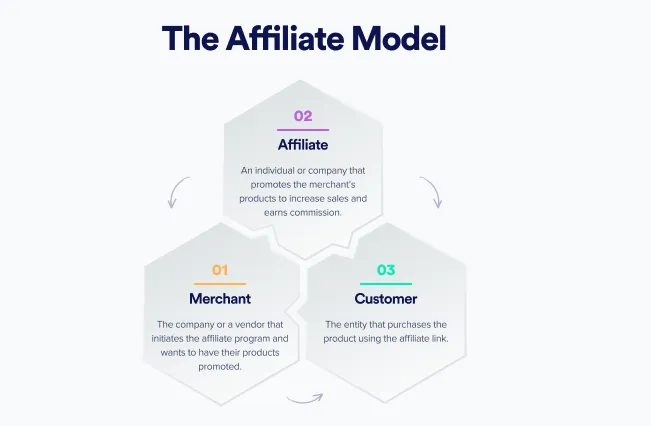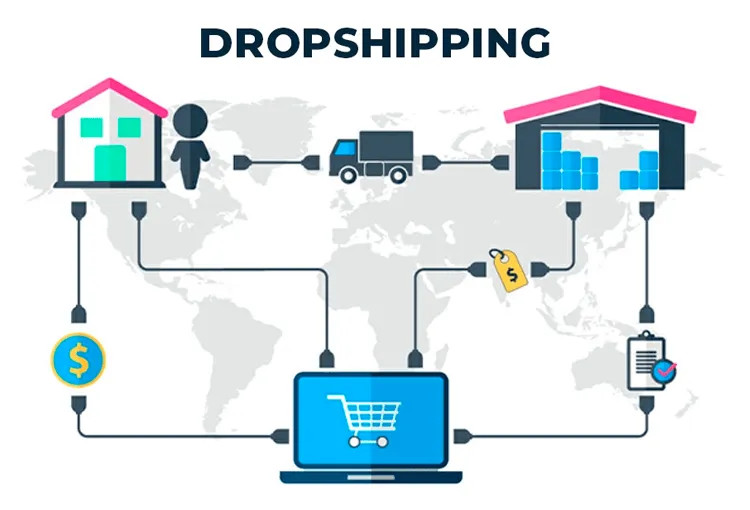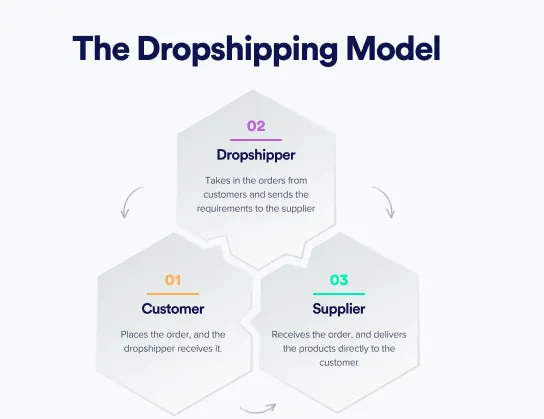Dropshipping vs affiliate marketing are now known as two prominent ways for anyone looking to make money online today. While both methods offer the potential for financial gain, they differ significantly in their approaches and mechanics.
However, it’s important to dispel the notion that either of these methods is a quick and easy way to get rich. Success in both dropshipping and affiliate marketing requires dedication, hard work, and a willingness to learn and adapt.
If you’re wondering how to become an affiliate marketer, it’s crucial to understand the strategies involved, from choosing the right niche to building an audience and promoting products effectively.
Even after achieving a steady income, it’s essential to remain proactive and keep up with industry trends to maintain and grow your earnings.
In this blog, we’ll explore the differences, pros, and cons of dropshipping and affiliate marketing to help you decide which path is best for you.
Eduma – Education WordPress Theme
We provide an amazing WordPress theme with fast and responsive designs. Let’s find out!
Dropshipping vs Affiliate Marketing: A Side-by-Side Comparison
| Criteria | Dropshipping | Affiliate Marketing |
| How it Works | No need to store or ship products; profit from price differences. | Refer customers and earn commissions on their purchases. |
| Business Model | Profit = Selling Price – Wholesale Price | Profit = Commission on product sales (usually monthly). |
| Business Management | Drive traffic to the merchant’s website via affiliate links. | Growth depends on the merchant’s success and your marketing efforts. |
| Ease of Use | Handle customer support and order fulfillment. | No direct customer interaction or order management. |
| Commission | Set your own prices and control offers. | Receive a fixed commission set by the merchant. |
| Growth Prospect | A well-run store can grow organically over time. | Growth depends on merchant’s success and your marketing efforts. |
| Recurrence | Potential for repeat business and customer loyalty. | Primarily one-off transactions. |
| Control | Full control over product selection and pricing. | Limited control; dependent on merchant’s offerings. |
| Customer Data | You own and manage customer data. | No direct access to customer data. |
| Future Prospect | Can evolve into a full-fledged brand and business. | Income relies on the retailer/manufacturer you promote. |
What is Affiliate Marketing?
Affiliate marketing operates on a straightforward principle: you promote another company’s product or service and earn a commission for each sale generated through your unique affiliate link. The process involves signing up for an affiliate program, obtaining your personalized link, and then strategically marketing the product using that link. You get paid whenever someone makes a purchase using your link.
The beauty of affiliate marketing lies in its accessibility. You can engage in affiliate marketing on various platforms without the need to maintain inventory or deal with customer service issues. The fundamental concept is simple: the more effectively you promote, the more you earn.

Now, let’s address the profitability aspect. Affiliate marketing can indeed be highly profitable if you’re willing to invest the necessary time and effort. You might have noticed YouTube channels encouraging you to buy products using a link in their description – that’s affiliate marketing in action.
Initially, convincing people to use your link might be challenging. However, generating profits becomes significantly easier once you’ve established a substantial online presence or amassed a considerable following. The snowball effect is a key advantage of affiliate marketing. Your older content can continue to attract customers and generate income for months or even years, making it an excellent source of passive income.
Key Players in Affiliate Marketing
Three primary players are involved in the affiliate marketing ecosystem:

- Merchant: The company or vendor that establishes the affiliate program and seeks to have its products or services promoted.
- Affiliate: The individual or entity that promotes the merchant’s offerings to drive sales and earns a commission for each successful transaction.
- Customer: The person who purchases using the affiliate’s unique link. Upon transaction completion, the merchant receives payment and distributes commissions to the affiliates after a specified period.
Advantages of Affiliate Marketing
Affiliate marketing is a booming industry, projected to reach $17 billion in 2024. Its appeal stems from several key benefits:
- Low Barrier to Entry: You don’t need a massive investment to get started with affiliate marketing. You can even begin with just your phone or laptop. Many affiliate programs are free to join, and some even offer sign-up bonuses to new affiliates. While some costs might be associated with specific affiliate marketing platforms, starting on social media platforms like YouTube, Instagram, or Facebook is entirely free. However, if you plan to create your website, you’ll need to budget for domain registration, hosting, and tools to enhance your online presence.
- Passive Income Potential: Affiliate marketing demands significant effort initially, but the workload decreases over time. Once you’ve cultivated a decent online audience, you won’t need to dedicate full-time hours to generate income. Although you’ll still need to create new content regularly, your existing content can continue to attract customers and generate sales for an extended period. This makes affiliate marketing an excellent way to build a passive income stream. Many individuals are successfully earning a substantial passive income solely through affiliate marketing.
- No Post-Sales Hassle: Another compelling reason to consider affiliate marketing is that your responsibility ends once a customer purchases through your link. Your role is solely to promote the affiliate offers provided by the network you’ve joined. The merchant handles all post-sales responsibilities, including customer service and product fulfillment.
Disadvantages of Affiliate Marketing
Like any business model, affiliate marketing has its drawbacks. It’s essential to be aware of these potential challenges before embarking on your affiliate marketing journey:
- Commission-Based Earnings: Affiliate marketing typically operates on a commission-based model, which can be a disadvantage, particularly in the eCommerce sector. If a visitor makes multiple purchases from a merchant, you’ll likely only receive commissions for the specific product(s) you promoted. Furthermore, commission rates are usually fixed, limiting your control over your earnings potential.
- Delayed Payments: While affiliate commissions are typically paid monthly, delays can occur due to backlogs or financial issues on the merchant’s end.
- Potential for Link Removal: Due to the prevalence of online scams, people are often wary of clicking on affiliate links. In some cases, they might remove the affiliate tracking code from the link or visit the merchant’s website directly, bypassing your affiliate link.
Unfortunately, this can result in lost commissions for affiliates. Even if you’ve successfully introduced someone to a product, you won’t earn a commission if they don’t use your link to make the purchase.
Now that we’ve explored affiliate marketing vs dropshipping and compared the two models.
What is Dropshipping?

Dropshipping is a rapidly growing business model projected to reach a remarkable valuation of $1670 billion by 2031. It’s an eCommerce model that allows you to sell products without the need to hold inventory. You simply take orders from customers and pass them on to your suppliers, who then ship the products directly to the customers.
The allure of dropshipping lies in the potential to earn profits through arbitrage. You sell products at a higher price than what you pay your suppliers, pocketing the difference.
Key Players in Dropshipping

Dropshipping also involves three key players:
- Customer: The individual who places an order through your online store or other sales channel. They select their desired product and customization options from the choices you provide.
- Dropshipper: You, the entrepreneur who receives the order and forwards it to the supplier for fulfillment.
- Supplier: The entity that receives the order from you, manufactures or procures the product, and ships it directly to the customer.
Advantages of Dropshipping
Dropshipping offers several enticing benefits that make it an appealing option for aspiring entrepreneurs:
- No Barrier to Entry: Dropshipping requires minimal upfront investment, making it accessible to virtually anyone with an internet connection. You have complete autonomy over your product selection, marketing strategies, and sales approach. All you need is a domain name and hosting to establish your online store.
- Greater Earning Potential: Many individuals are transitioning from affiliate marketing to dropshipping due to the limitations of fixed commissions in the former. Dropshipping allows you to precisely target potential customers interested in your products and collect payment upon order confirmation. With dropshipping, your earning potential isn’t capped by fixed commissions. You have the freedom to set your prices and profit margins, allowing you to earn more as you sell more.
- Scalability: Dropshipping operates much like a traditional eCommerce store, and customers often can’t differentiate between the two. This makes it easier to scale your dropshipping business compared to an affiliate website, which is inherently dependent on the success of the associated merchant. A dropshipping store functions as its brand. It can grow organically over time, particularly through positive word-of-mouth recommendations. From the customer’s perspective, they are purchasing directly from your brand.
Disadvantages of Dropshipping
While dropshipping presents numerous advantages, it’s crucial to acknowledge its potential drawbacks:
- Customer Support Management: As an eCommerce business model such as B2C or B2B business, dropshipping places the responsibility for customer support and after-sales services squarely on your shoulders. If any issues arise with an order, your brand’s reputation is at stake. This added responsibility distinguishes dropshipping from affiliate marketing, where you’re not directly involved in customer interactions or order fulfillment.
- Limited Control Over Shipping: Shipping can be a challenge in dropshipping as it relies heavily on your suppliers. Since you don’t personally handle product inspection and shipping, errors and delays can occur. This is because suppliers often ship products at their convenience, providing you only with a shipping order ID that you then share with the customer for tracking purposes. However, you can mitigate this issue by carefully selecting suppliers with a proven track record of reliable and timely shipping.
- Price Competition in Saturated Niches: Choosing the right niche is crucial for success in dropshipping. Unfortunately, due to the growing popularity of dropshipping, many niches have become saturated, leading to lower profit margins. This forces some dropshippers to operate on thinner margins to remain competitive.
Dropshipping vs Affiliate Marketing: Which Is More Profitable?
Both dropshipping vs affiliate marketing offer lucrative opportunities, and their profitability ultimately hinges on the effort and strategies you employ.
The profit models for each differ significantly. In affiliate marketing, your commission is predetermined by the vendor or merchant. In dropshipping, you have the freedom to set your prices.
This means that in affiliate marketing, your earnings increase in direct proportion to the number of sales you generate. In dropshipping, your profit margins are influenced by your pricing decisions.
However, it’s crucial to remember that returns and customer support can impact your profits in dropshipping, whereas you won’t incur such costs with affiliate marketing.
Dropshipping vs Affiliate Marketing: Which One Is Easier?
Dropshipping vs affiliate marketing are not necessarily “easy.” Both models present unique challenges and demand dedication, hard work, and perseverance.
If you’re leaning towards affiliate marketing, your primary focus will be on building a loyal audience that trusts your recommendations and is inclined to purchase the products you promote. This requires time and effort, as you’ll need to create high-quality content and engage with your audience consistently.
Conversely, dropshipping involves juggling various tasks, including setting up customer support, managing inventory, and ensuring competitive pricing.
Regardless of the model you choose, expect to put in extra effort during the initial stages to achieve growth. Even after your business gains traction, it’s vital to maintain the same level of commitment and quality to retain your audience and sustain your profits.
Remember, complacency or neglecting your business can lead to decreased earnings and customer attrition. Whether you opt for dropshipping or affiliate marketing, be prepared to work diligently and stay focused on your goals.
Dropshipping vs. Affiliate Marketing: Increasing Earnings
To boost your earnings in either dropshipping vs affiliate marketing, you need a clear understanding of their respective business and profit models.
In affiliate marketing, your income is directly tied to the number of sales you generate. Since commissions are fixed, the more you sell, the more you earn. Therefore, your focus should be on expanding your audience to increase your earnings potential.
In contrast, dropshipping offers more control over profitability factors such as pricing, product acquisition costs, customer service, after-sales support, and niche selection. You can analyze each of these areas and make necessary adjustments to maximize your profits.
Ultimately, with the right approach and strategies, you can achieve significant earnings in either model.
Final Thoughts: Dropshipping vs Affiliate Marketing
Both affiliate marketing vs dropshipping present unique advantages and disadvantages. The ideal business model for you depends on your individual goals, preferences, and skillset.
If you choose affiliate marketing, your primary objective will be to grow your audience. However, you’ll always be reliant on the vendors you partner with and limited by their product offerings.
Dropshipping, on the other hand, offers greater flexibility, allowing you to switch vendors and set your prices. However, it also entails more responsibilities, such as handling customer service and returns.
In conclusion, both models can be viable paths to generating income online. The key is to carefully consider your strengths, interests, and long-term goals before making a decision.
Read more: 6+ Best Email Automation Software for Your Business (Expert Pick)
Contact US | ThimPress:
Website: https://thimpress.com/
Fanpage: https://www.facebook.com/ThimPress
YouTube: https://www.youtube.com/c/ThimPressDesign
Twitter (X): https://twitter.com/thimpress


